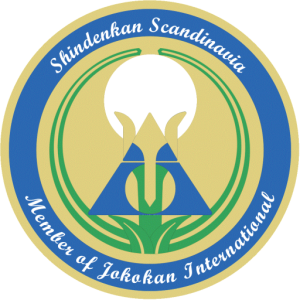Written by Anders and Søren S. Hansen, Members until 2013
Hsingi has been mentioned in many contexts over the past years by Kimu Sensei. For us, it stood as one of the unsettled areas, we would now be so privileged to gain insight into the upcoming course held over three weekend sessions. It had been referred to as the "doctrine about the power discharge" but otherwise we were on the bottom. The net brought a bit more insight into Hsingi's history and practice, including that it was "aggressive, seemingly linear movements and explosive power". Imagine if we could find the "button" to get power behind our punches/kicks/movements and at the same time optimize the generation of power in a small limited area to the detriment of the opponent. That would be absolutely fantastic.
Further studies on the web explained and supported the idea of power discharge as "coordinated movements to generate bursts of power intended to overwhelm the opponent, simultaneously attacking and defending. Forms vary from school to school, but include barehanded sequences and versions of the same sequences with a variety of weapons. These sequences are based upon the movements and fighting behavior of a variety of animals”. This is interesting, as it refers to the technique as usable with a range of weapons - very relevant in Shindenkan, where we have both knives, swords, and even pistols in addition to the bare fists. That the techniques are based on animal movements and behavior was evident from the long and complicated explanations of where Hsingi came from and why there are different branches.
But we don't have to worry about all this, as we trust that Kimu Sensei has taken the essence out of Hsingi's story and that only the relevant is presented on a silver platter.
This was the second module of three and there was a natural expectation that the laid out guidelines would be followed. On the first module, we had "practiced" challenging each other with blows where one was positioned in the middle and had to cushion the blows from the others. During this module there was a lot of practice time peppered with self-evaluation sessions where the development of our attack was discussed. At the same time, basic technique and principles such as TAK were practiced. Real contact, the importance of the hips was rehearsed.
On this second module we thought it was time to go to the macrons because the pads were put to use right from the start. Through different hitting principles and movements, we practiced hitting the cushions, and at one point were completely high. But this smugness was soon taken away from us. In the usual diplomatic fashion, Kimu Sensei told that "Father is not angry, Father is disappointed". It had taken more than 1½ hours for us to get up to speed, to get the intensity up to the level that was expected, and that we had totally disregarded the learning we had gained at, among other things. The POMW courses which have been an immediate extension of this. We went to great lengths to prove our worth, to be successful with the punches rather than practicing the technique in the punches and the displacement of the body. So how cold can a cold dip be.
Well, back on the horse again, up the intensity and then just do what is asked. And at the same time, we got to see in words and actions what Hsingi is all about. Move the body optimally, the most direct way to the goal (provided you know what to do), and perform the deed with the greatest possible force. Something that in animals we call instinct.
Kimu Sensei showed how it should be done while Jens Hanshi-dai held the cushion. Here all the principles of TAK (correct technique, distance and contact), MITT (correct Mai-ai, setting, Tai-sabaki and Technique) and CT (correct center and timing) were used. This put it all into perspective. This is not to say that now we could do that - but there were definitely some things that started to fall into place in order to be superior to the opponent in a match.
The subsequent training required the utmost concentration in order to get as much as possible to go up into a larger unit. But it was nice to be supplemented with some tools in the toolbox that could be used not just for Hsingi but throughout our continuous training.
After this module we left not knowing how tired our bodies and brains were. It was much more strenuous than we initially thought. It was an exciting day with a lot of learning and perspective.
We look forward to the 3rd module this coming weekend.




